Home > Off the Charts > African Leapfrog Index
African Leapfrog Index
How six African countries can expedite social and economic growth using digital technologies
We examined the potential of digital transformations using six key countries drawn from different sub-regions of the continent representing distinct archetypes of size (of economy and population), economic growth, median age, quality of governance, and digital momentum – Egypt, Ethiopia, Kenya, Nigeria, Rwanda, and South Africa – to draw meaningful inferences on the region’s leapfrog potential and identify implications for action. Using this framework, we examined the primary levers for harnessing digital technologies to facilitate development and inclusive growth, from the ease of creating digital jobs, to the resilience of governance and infrastructure, to overall foundations of digital potential.
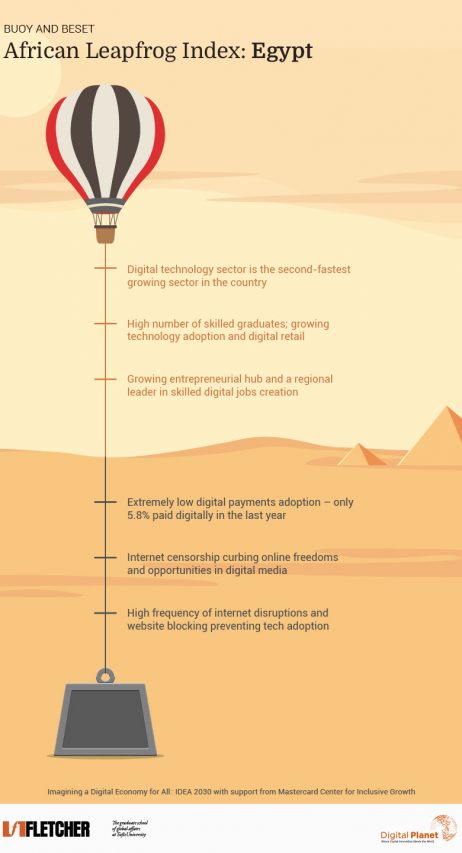
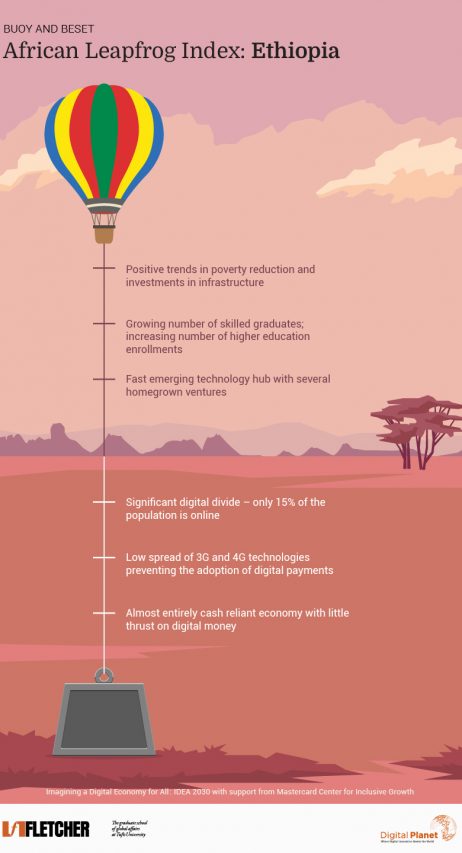
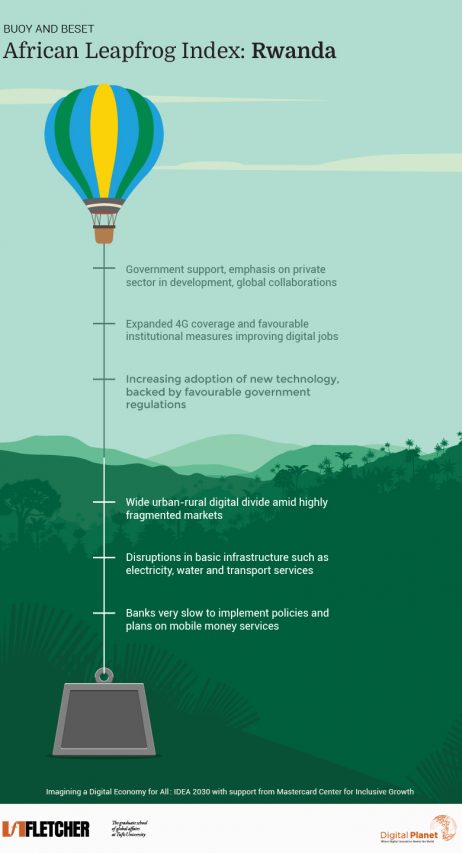
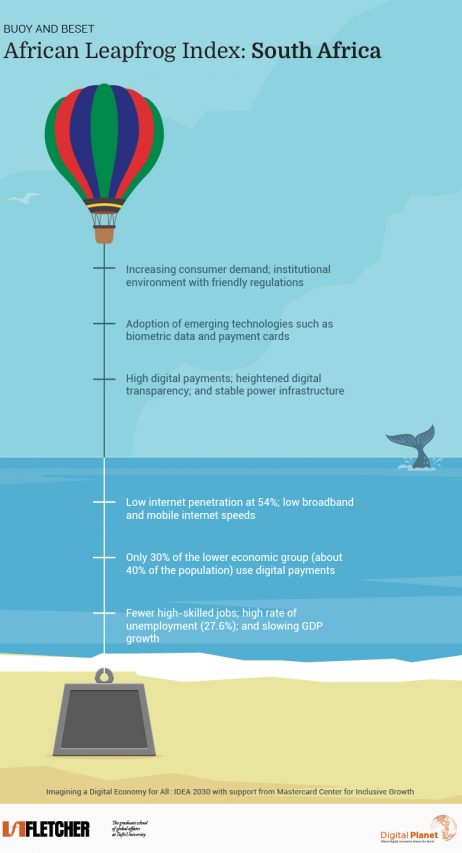
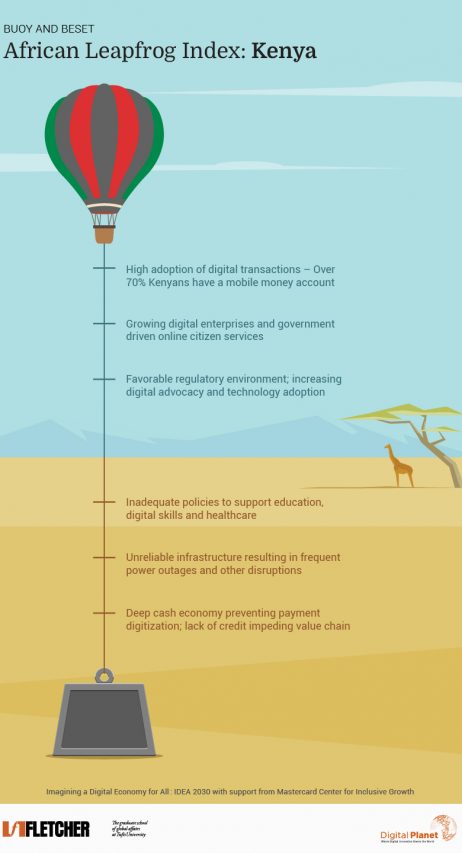

Key Observations and Insights
There is plenty of evidence that despite the challenges, the region still has “robust long-term economic fundamentals.”15 There is a wider belief that the true acceleration potential for the region lies in the rapid spread of mobile digital technology, which would help the region “leapfrog”: compress the process of economic development by harnessing technological innovation to overcome its many challenges.
Getting lions to leapfrog – or even to stir — may seem like a tall order. However, as The Economist notes in a special report, wondering whether Africa can leapfrog and beat the pace of change of developed regions may be the wrong question to ask.16 A more nuanced question may be: Can technology help overcome the primary barriers that have long held back Africa’s economies and people? And can they narrow their digital gaps vis-à-vis external benchmarks?
We examined the potential of digital transformations using six key countries drawn from different sub-regions of the continent representing distinct archetypes of size (of economy and population), economic growth, median age, quality of governance, and digital momentum – Egypt, Ethiopia, Kenya, Nigeria, Rwanda, and South Africa – to draw meaningful inferences on the region’s leapfrog potential and identify implications for action. Using this framework, we examined the primary levers for harnessing digital technologies to facilitate development and inclusive growth, from the ease of creating digital jobs, to the resilience of governance and infrastructure, to overall foundations of digital potential.
The six African countries studied display distinctly different profiles in their leapfrogging abilities. Each has a different combination of strengths, opportunities for growth, and challenges that must be addressed in order to foster digital growth. The opportunities and challenges for each of the countries are outlined in the visuals above.
The regional leaders represent different areas of strength and opportunities to grow. To get to the benchmark and develop a more balanced, well-rounded leapfrog profile, Kenya’s priority would be to improve its Ease of Creating Digital Jobs – i.e., nurturing jobs in the digital economy, such as online freelance, ridesharing, and in e-commerce – while South Africa’s priority needs to be to improve on Foundational Digital Potential – i.e., expanding the integration and use of digital technologies across society. While Kenya has the seen the greatest amount of digital change over the past decade of all African countries studied and has over 80% Internet penetration, it can, for example, improve its education and skill-building capacity to enhance its ability to grow higher-skilled digital services jobs. South Africa, on the other hand, can improve its payments capabilities; it made 65% of payments in cash, as compared to 40% in Rwanda – and this is despite the fact that Rwanda has only 30% of its population on the Internet compared to South Africa’s 54%. South Africa’s strength in creating high skilled digital jobs – through a balanced repertoire of strengths in available human capital, market sophistication and facilitating institutions – is impressive when compared to similar baskets of developing world nations from ASEAN and Latin America; it is competitive in a global marketplace for such high-skilled jobs, such as digital freelancing.
Rwanda has several core strengths in Governance (providing digital government services), Digital Evolution (its overall state of digital development) and Mobile Money (use of mobile money accounts, and other forms of digital money). These are solid foundations to build upon to facilitate digital leapfrogging. It needs to invest in the other capabilities – such as infrastructure, Internet penetration and online freedoms to fully leverage its core strengths.
Nigeria’s route to capturing more digital opportunities runs through improving the reliability of basic infrastructure. While Nigeria is strong in internet affordability, investments in reducing power outages and other unintentional disruptions to the internet will be key to enhancing its digital potential. Of the six countries studied, Nigeria has the biggest gap to close in this area.
When compared with the six other African countries, Egypt’s primary strengths are in the potential ease of creating medium and high skilled digital jobs, due in part to its high number of skilled graduates. Egypt’s tertiary unemployment rate is high: ILO estimates from 2014 place it at 34 percent.17 Tapping into its digital potential and continuing to drive efforts to digitize payments will enable the country to more fully capitalize on these strengths.
Ethiopia, with its high rate of GDP growth, has the most to gain from creating strong digital foundations and basic infrastructure, improving on its low momentum, and moving away from its near total reliance on cash payments towards digital payment rails.








